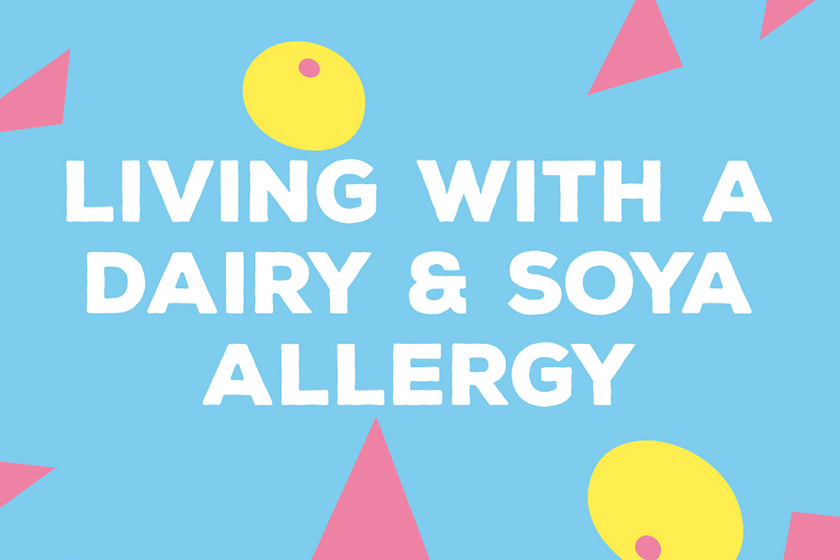
When your kid develops a food allergy at a young age, it can often be quite tricky trying to understand what food groups are causing the symptoms. My youngest child developed a dairy allergy after just 6 months (or so we think, it could have been sometime before then but we just didn’t see all the signs). When your child is so young, there are many variables that can affect their behaviour, sleep patterns and appetite, and when they can’t tell you what’s wrong, you can often overlook an allergy.
Once we discovered he had a dairy allergy, we quickly changed his diet and saw an improvement in his overall well-being. My biggest priority was ensuring he got all the nutrients he needed, and we started feeding him fortified soya milk. I was unaware that it’s common to suffer from both a cows milk allergy and a soya allergy- nobody had ever mentioned it. However it wasn’t long before new symptoms started developing, we could see he was in pain, and soon discovered that he also has a soya allergy.
I’m the U.K. between 2-4% of children develop cow’s milk allergy, and many children with a cow’s milk allergy will also have a soya allergy. It occurs when the body’s immune system reacts to proteins found in milk and soya. Allergic reactions can be immediate (within minutes to two hours of taking milk or soya containing products) or delayed (between 2-48 hours or longer).
Symptoms of cow’s milk and soya allergy
(source- Allergy UK)
The only way to treat a soya and dairy allergy is by following a strict cows milk and soya free diet.
I really struggled for the first few months and found shopping to be a real challenge. Every time I reached for a dairy free product, it contained soya, and vice versa. So few products are free from both soya and dairy, and there’s such a limited choice on the shelves. When I find treats that he can have and enjoys, I stack up the cupboards!! Luckily he loves our Angelic cookies…
I opted for Oat milk as an alternative, however there are other suitable options including coconut, pea, hemp and quinoa. It takes a bit of trial and error, and for some children, they discover that they have additional allergies. There are many dieticians on hand, and if you think your child might have a food allergy, you should speak to your doctor and they may refer you to a dietitian. Dieticians can offer plenty of useful advice about ensuring that your child gets a good source of calcium. Allergy U.K. is a great resource, and if you’re unsure whether your child has a dairy and soya allergy, their website is definitely worth a visit- https://www.allergyuk.org.
Angelic Free From Ltd Suite 314, 8 Church Street, Inverness, IV1 1EA, Scotland Registered Number: SC400402.
This site is protected by reCAPTCHA and the Google Privacy Policy and Terms of Service apply.
©Copyright 2021, Angelic Free From Ltd.
All rights reserved.
| Cookie | Duration | Description |
|---|---|---|
| cookielawinfo-checbox-analytics | 11 months | This cookie is set by GDPR Cookie Consent plugin. The cookie is used to store the user consent for the cookies in the category "Analytics". |
| cookielawinfo-checbox-functional | 11 months | The cookie is set by GDPR cookie consent to record the user consent for the cookies in the category "Functional". |
| cookielawinfo-checbox-others | 11 months | This cookie is set by GDPR Cookie Consent plugin. The cookie is used to store the user consent for the cookies in the category "Other. |
| cookielawinfo-checkbox-necessary | 11 months | This cookie is set by GDPR Cookie Consent plugin. The cookies is used to store the user consent for the cookies in the category "Necessary". |
| cookielawinfo-checkbox-performance | 11 months | This cookie is set by GDPR Cookie Consent plugin. The cookie is used to store the user consent for the cookies in the category "Performance". |
| viewed_cookie_policy | 11 months | The cookie is set by the GDPR Cookie Consent plugin and is used to store whether or not user has consented to the use of cookies. It does not store any personal data. |